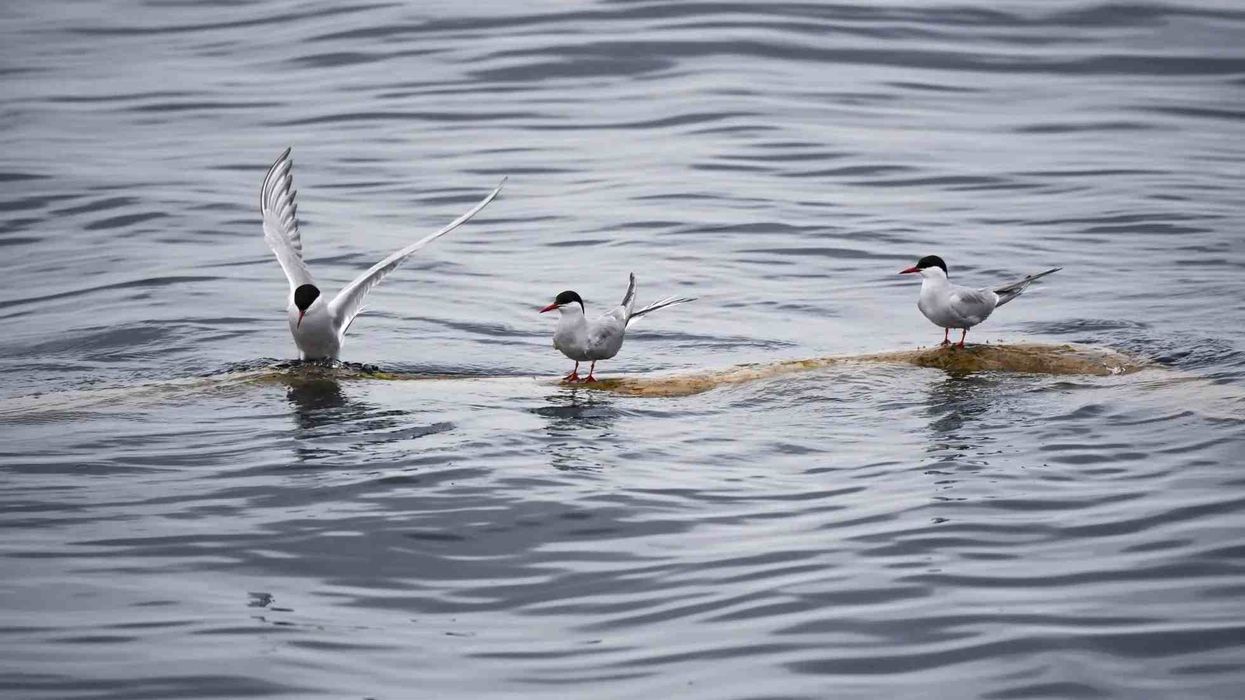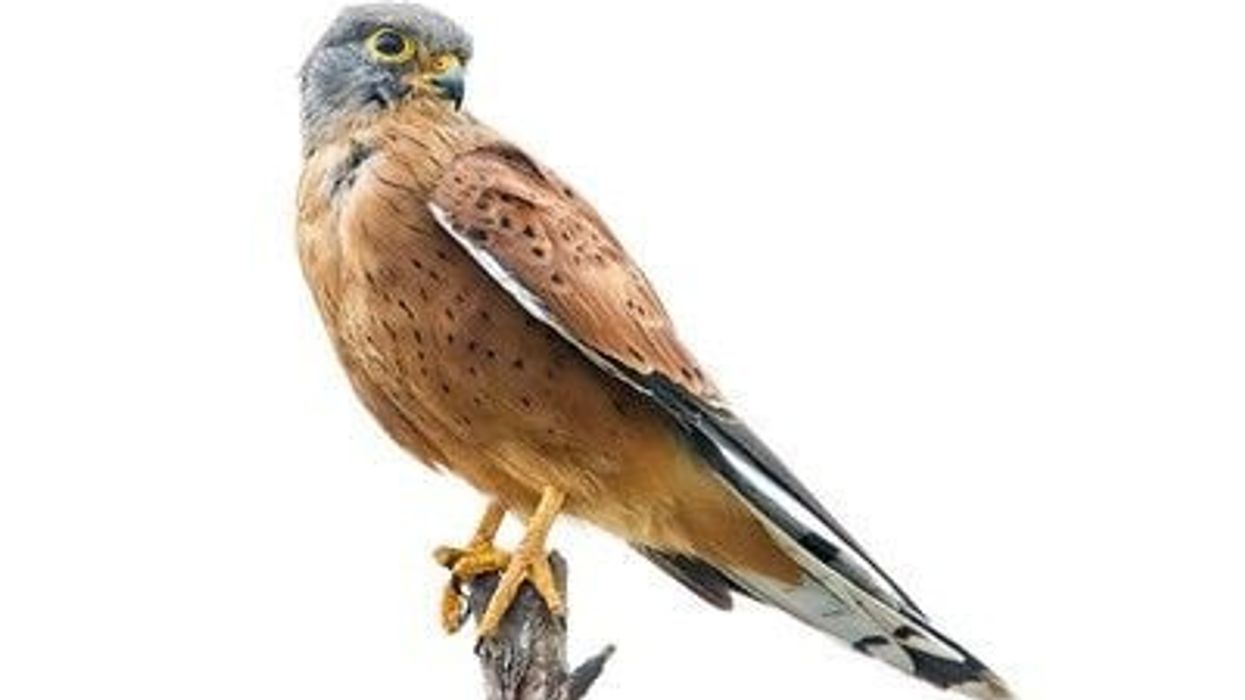Frequently seen around North America, the fish-loving birds called Aleutian tern are known for several things. Having the longest migration route in the world, they are also some of the fastest fliers in the world.
You can see the Aleutian tern in Southeast Asia when they are migrating to the south for the winter season, usually in locations like Indonesia.
They come to these locations for breeding and make nests close to heavy vegetation to protect them from other predators in the area. They have a massive wingspan and travel in colonies with moderate to large groups of birds.
They range all across North America and range all over Southeast Asia when migrating for winter.
This range usually stays similar but varies depending on concentrations of fish, food, and vegetation. Read on for everything you want to know about this unique bird, or check out some facts about various other birds like the swallow-tailed kite and the blue jay, and many more.
Aleutian Tern Interesting Facts
What type of animal is an Aleutian tern?
The Aleutian tern, Onychoprion aleuticus, is a type of bird.
What class of animal does an Aleutian tern belong to?
The Aleutian tern, Onychoprion aleuticus, belongs to the class of bird.
How many Aleutian terns are there in the world?
Based on the US Fish and Wildlife Service (2006) statistics, Wetlands International projected an overall population of 17,000-20,000 birds in 2005, comprising 9,500 birds throughout Alaska. The overall population was estimated to be 11,000-13,000 mature adults.
Where does an Aleutian tern live?
During the breeding season, the colonies congregate along Alaska's Pacific coasts. Breeding colonies have been found in coastal of the Chukchi Sea (western Alaska), in the Yukon-Kuskokwim River Delta on the Alaska Peninsula, and on the Seward Peninsula, as well as in the Aleutian Islands of the Kodiak Archipelago.
Although the Aleutian tern range in winter is unknown, it is thought to occur off the coasts of Malaysia and Indonesia. In the fall and spring, small groups of the species have been spotted in coastal locations surrounding Hong Kong and around Indonesia and Singapore between October-April.
The Aleutian tern is unique among its congeners.
It's the only species that migrates between tropical wintering habitats and subarctic breeding zones in the South Pacific yearly. Only a small percentage of Charadriiformes found in Alaska appear to have a link to East Asia.
What is an Aleutian tern's habitat?
Aleutian tern Onychoprion birds, which spend the winter season near the Equator (western Pacific), live in wetlands. The Aleutian tern is found on solitary rocky islands along coasts, particularly at river mouths, amid sparsely vegetated shorelines, grassy meadows, and marshes. When it is not breeding, the Aleutian tern is a pelagic species.
Who do Aleutian terns live with?
Aleutian terns are highly gregarious creatures. Their nests are usually found in informal mixed-species colonies.
However, their behavior is less destructive than Arctic terns. Even when traveling from the north to the south for the winter, they will be seen traveling in a colony. These networks become even more tight-knit when migrating from North America, or when breeding season comes in when they are in the South.
How long does an Aleutian tern live?
The average Aleutian tern, Onychoprion aleuticus, survives approximately 30 years.
How do they reproduce?
If the habitat remains sufficiently stable, these terns reproduce in colonies and are site-faithful. Then, the parents construct the nest. The nest is a shallow hole usually made of mosses or coastal bluegrass. The eggs are incubated, and both parents feed the young.
A nest is usually made off the shore of the sea, on the surface of a rock. During the breeding season, all breeds of this bird tend to make their nest in proximity to vegetation, and their colony. The colony provides protection to all the nests.
One to three eggs is the average clutch size. Young birds go to taller vegetation after hatching eggs before joining adults in staging locations near the coast.
The young begin to fly around four to five weeks. These Alaskan terns are readily startled from their nests, and as soon as a disturbance is detected, the adults fly away.
This tern is not aggressive when it comes to protecting its young and nest. They are relatively calm parents and will even stay with their young in the nest for long periods of time until it is time for migration.
What is their conservation status?
According to the IUCN Red List, the Aleutian tern status is declared Vulnerable. However, the least tern species from the family Laridae was declared the Least Concern.
Aleutian Tern Fun Facts
What do Aleutian terns look like?
These birds have a very unique description. The breeding mature has a black cap and a white forehead.
It has a white underwing having dark-tipped primaries and a dark band on the secondaries that serves as a diagnostic feature. The Aleutian tern has black legs and a small, pointed bill. In the winter, the forehead bar vanishes, but the dark secondary line remains.
How cute are they?
This Alaskan tern that breeds on the coast in Russia and Alaska and has a diet of small fish is beautiful and gorgeous.
How do they communicate?
These birds have been linked to a variety of calls in the literature. Their calls are distinct from those of the common tern. The calls of the Aleutian tern are similar to the calls of red-necked phalarope.
How big is an Aleutian tern?
The Aleutian tern length range measures up to 13–15 in (33–38.1 cm). The Arctic tern, a bird that resembles the Aleutian species, is 11-15 in (27.9-38.1 cm) long. Therefore, Aleutian tern birds are a little bit bigger than Arctic terns.
How fast can an Aleutian tern fly?
The flight of the Aleutian tern is quite elegant. Their flight is robust and unwavering, with slower wing strokes than common and Arctic terns. As a result, they mostly glide above the sea surface rather than the land. This flight over the water's surface becomes even more prominent when in migration.
The Arctic tern is among the fastest migratory birds on the planet, traveling at an average speed of roughly 22-25 mph (35.4-40.2 kph). So it looks like this bird certainly won't take too long in migration to warmer climes.
How much does an Aleutian tern weigh?
The weight range of this tern (family: Laridae) is approximately 2.9–5 oz (82.2–141.7 g).
What are the male and female names of the species?
Male and female of these birds, both with uncommon songs and spending the winter in the western Pacific, don't have any specific title.
What would you call a baby Aleutian tern?
Young birds of this species have no particular name.
What do they eat?
The Aleutian tern eats mostly small fish, but they also eat insects in their diet. They mostly feed by soaring, hovering low above the water, diving or surface-dipping into the water to catch prey.
Are they rare?
This rare bird breeds in the Bering Sea and adjacent waters, including the Aleutian Islands and most of the southern Alaskan coast. Although it is sometimes seen with Arctic terns, it is significantly less common.
Would they make a good pet?
As these birds are vulnerable, it is illegal to keep this species in captivity.
Did you know...
It's often confused with the Arctic tern, which it looks a lot like.
Although both species have a black cap, the Aleutian tern can be differentiated by its white forehead (though juvenile Arctic terns also have white foreheads). In addition, the Arctic tern has a brilliant red bill, legs, and feet during the breeding season, but the Aleutian tern has a deep black bill, black legs, and feet.
Finally, when comparing the Aleutian tern vs Caspian tern, we can see that the Caspian tern is a bigger and more powerful bird.
Is the Aleutian tern endangered?
The current global minimal breeding population is estimated to be around 31,000 birds, with the majority of colonies in Russia's Siberian area (25,600 birds in 89 colonies) and 18% in Alaska (5,530 birds in 111 colonies). Unfortunately, there have been indications of colony declines and abductions at isolated sites in Alaska in the recent decade.
As a result, the Aleutian tern conservation status has been designated as a Vulnerable species. Although the exact causes of decline are unknown, habitat alteration, egg harvesting, predation, and human activities are possible contributors.
Several agencies and non-governmental organizations have identified the Aleutian tern as a threatened species (Alaska Department of Fish and Game, U.S. Fish and Wildlife Service, Audubon Alaska, The North American Waterbird Conservation Plan).
However, the conservation efforts for the species are hampered by a paucity of data on breeding behavior and ecological activity. Surveillance of populations with colonies in Russia, Alaska, and the South Pacific and places in North America should reveal the cause as to why they are endangered.
Why are they called Aleutian tern?
The Aleutian tern was spotted on Kodiak Island and named after the Aleutian Islands, where it was expected to breed. Instead, they frequently build their nests among Arctic terns, known for being protective of their nests.
Here at Kidadl, we have carefully created lots of interesting family-friendly animal facts for everyone to discover! For more relatable content, check out these palm cockatoo facts and Hawaiian hawk facts for kids.
You can even occupy yourself at home by coloring in one of our free printable bird outline coloring pages.










